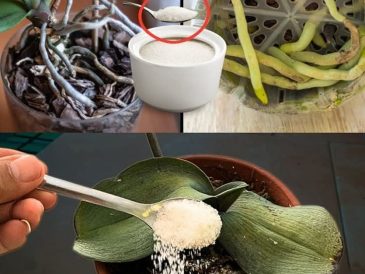Sage, scientifically known as Salvia officinalis, is more than just a culinary herb. Revered for centuries across cultures, this fragrant, silvery-green plant has been used by our grandparents for healing, cleansing, preserving, and protecting. Today, as we return to natural remedies and ancestral wisdom, sage is making a well-deserved comeback.
In this article, discover the many traditional and practical uses of sage—from spiritual rituals to homemade remedies and household hacks. These time-tested tricks not only honor our grandparents’ knowledge but also reconnect us to nature.
1. Purifying the Air and Energy (Smudging Ritual)
What it is: Smudging with dried sage is an ancient ritual, especially practiced by Native American and spiritual communities.
How it’s done:
- Dry sage leaves and tie them into a bundle.
- Light the end and blow gently to release the smoke.
- Walk around the house, especially corners and entryways, to “cleanse” negative energy.
Benefits:
- Said to purify the air and neutralize bad vibes.
- Science shows sage smoke can reduce airborne bacteria by up to 94%!
- Great for new homes, after arguments, or when you need emotional clarity.
2. Homemade Sage Spray (Natural Air Freshener & Purifier)
How to make it:
- Boil a handful of fresh sage leaves in 1 cup of water.
- Let it cool, strain, and pour into a spray bottle.
- Add a few drops of witch hazel or vodka (optional, as a preservative).
Uses:
- Spray on pillows and linens for relaxation.
- Use as a room freshener or during meditation.
- Acts as a mild insect repellent.
Why it’s amazing: Unlike chemical sprays, this is 100% natural, antimicrobial, and leaves behind a clean herbal scent.
☕ 3. Sage Infusion for Digestion and Colds
Traditional use: Grandma always had sage tea for colds and sore throats.
How to prepare it:
- Steep 1 teaspoon of dried or 3–4 fresh leaves in hot water for 5–7 minutes.
- Add lemon and honey for taste and added benefits.
Benefits:
- Aids digestion and soothes upset stomachs.
- Natural remedy for sore throat, coughing, and inflammation.
- Antioxidant-rich and antimicrobial.
4. Sage for Oral Health
Old remedy: In the past, people used sage to clean their teeth and freshen breath.
- Rub a fresh sage leaf directly on your gums and teeth.
- Or rinse your mouth with cooled sage tea.
Benefits:
- Antibacterial properties help prevent gum disease.
- Reduces bad breath and promotes oral hygiene.
5. Natural Moth Repellent
Old trick from grandma’s wardrobe!
- Place dried sage leaves in a small cloth pouch.
- Hang it inside your closet or place in drawers.
Why it works:
- The aroma repels moths and insects naturally.
- Keeps clothes smelling fresh and free of chemicals.
🧠 6. Mental Clarity and Memory Booster
Traditional belief: Sage was thought to improve memory and focus. Even the Latin name Salvia means “to heal.”
Modern science agrees:
- Studies show sage can support cognitive function and may help with memory retention.
- Simply keeping a sage plant nearby or burning sage while studying can enhance mental alertness.
7. Sage Oil for Skin Care
DIY skin toner:
- Steep sage in hot water and let cool.
- Use a cotton pad to dab on skin as a toner.
Benefits:
- Soothes inflammation.
- Helps with acne due to its antibacterial properties.
Bonus: A few drops of sage essential oil mixed with carrier oils like jojoba can calm irritated skin and reduce puffiness.
A Final Word from Grandma’s Garden…
Our grandparents knew the power of plants like sage. They didn’t waste it—they revered it. Whether it was to cleanse a home, soothe a sore throat, or keep bugs away from clothes, sage was always a go-to solution.
In a world increasingly dependent on synthetic products, it’s time to reconnect with nature’s wisdom. Keep a pot of sage on your windowsill and let its magic infuse your home with peace, purity, and well-being.





